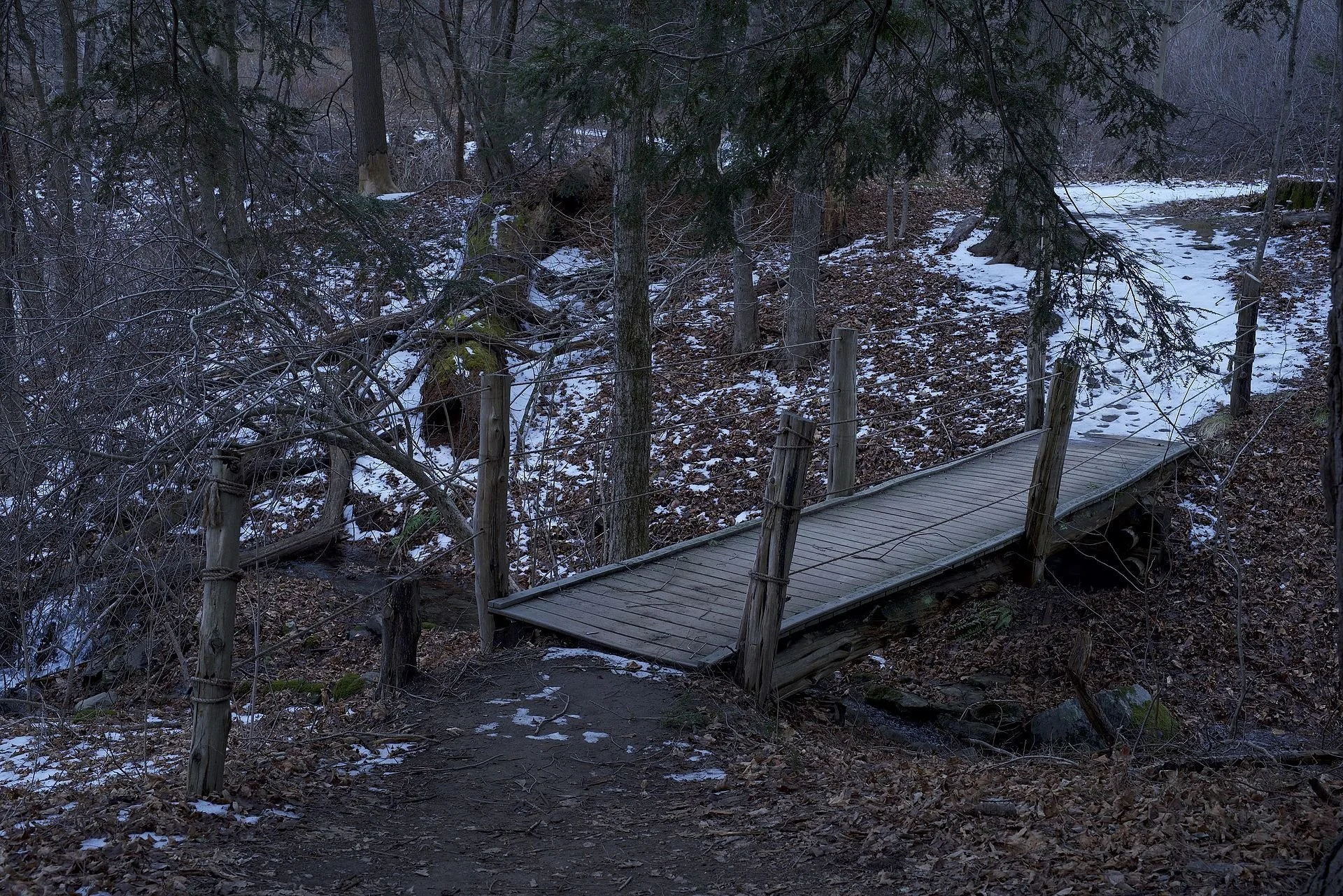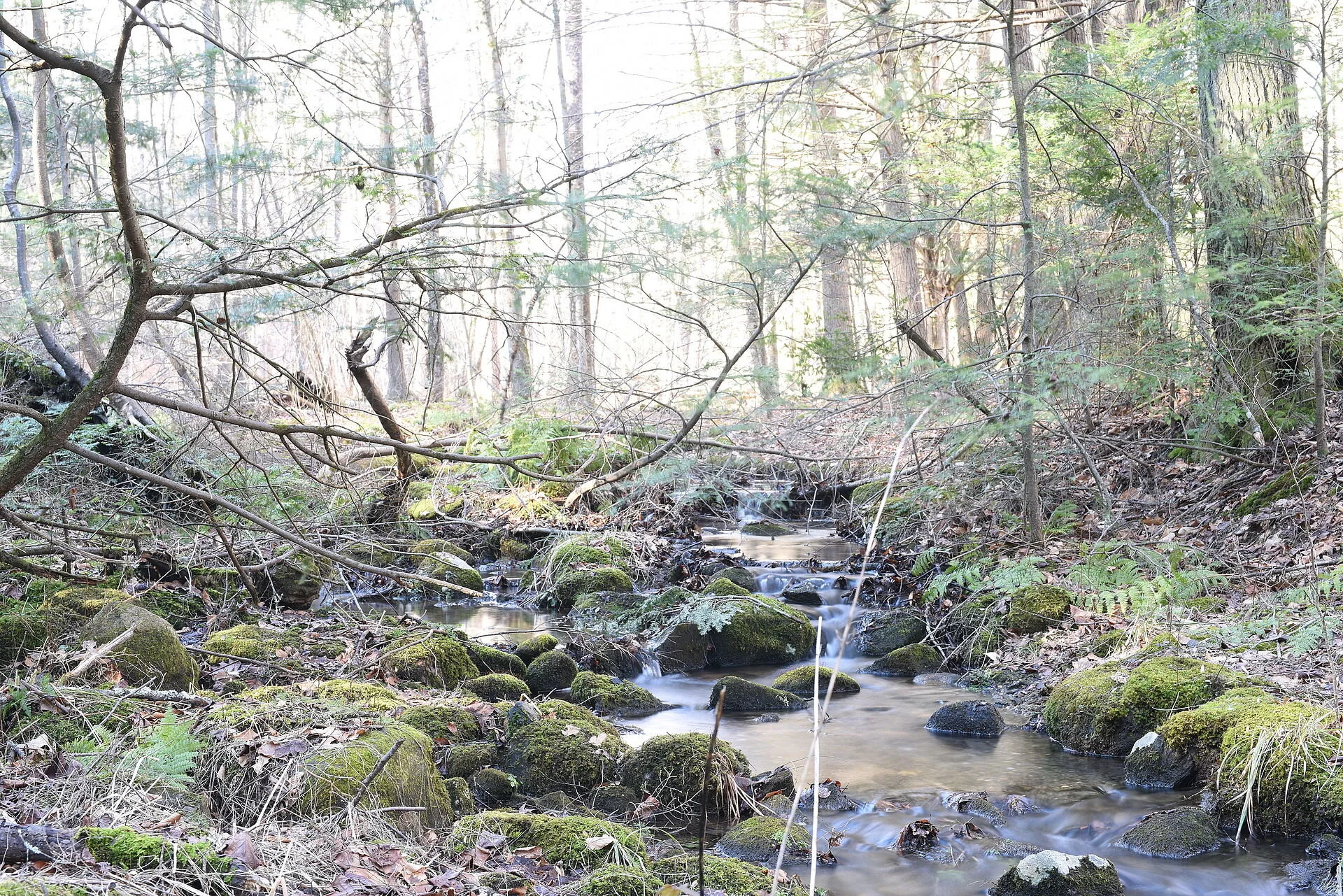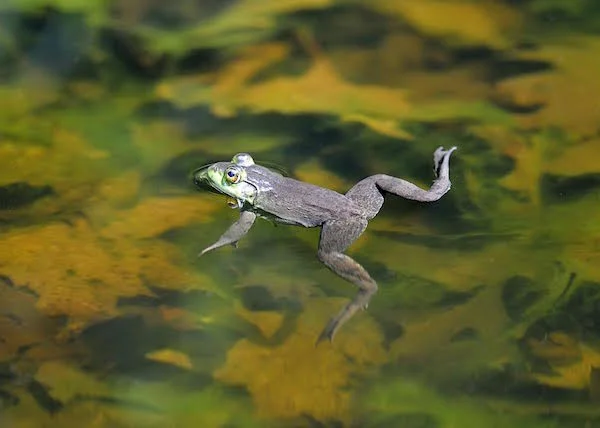
‘A farewell gesture’
Audubon Center Bent of the River trail in Southbury, Conn.
— Photo by Karl Thomas Moore
“March brings many things, but not hurricanes. But yesterday it brought a storm and a temperature drop, a farewell gesture from winter. The pipes froze again in the back part of the house. And as I viewed the solidly frozen bath mat in my shower, I felt I could do without any record-breaking statistics.’’
— Gladys Taber (1899-1980), in The Stillmeadow Road (1959), about life in her Southbury, Conn., farmhouse
Happy in Connecticut
Seal of Southbury, Conn
"I came to Southbury because I wanted to live a more simple life. When I was a child, I saw lots of movies about happy people living in Connecticut. And ever since then, that was where I wanted to live. I thought it would be like the movies. And it really is. It's exactly what I hoped it would be.’’
— Polly Berger (1930-2014), actress, singer, writer and TV host
Audubon Center Bent of the River Trail in Southbury.
—Photo by Karl Thomas Moore
Babbling like an idiot
In Southbury, Conn.
— Photo by Karlfonza
To what purpose, April, do you return again?
Beauty is not enough.
You can no longer quiet me with the redness
Of little leaves opening stickily.
I know what I know.
The sun is hot on my neck as I observe
The spikes of crocus.
The smell of the earth is good.
It is apparent that there is no death.
But what does that signify?
Not only under ground are the brains of men
Eaten by maggots.
Life in itself
Is nothing,
An empty cup, a flight of uncarpeted stairs.
It is not enough that yearly, down this hill,
April
Comes like an idiot, babbling and strewing flowers.
— Edna St. Vincent Millay (1892-1950), a native of Rockland, Maine, she was one of America’s most famous poets for decades.
Linden tree bud
— Photo by El Grafo
Ah, March!
“March brings many things, but not hurricanes. But yesterday it brought a storm and a temperature drop, a farewell gesture from winter. The pipes froze again in the back part of the house. And as I viewed the solidly frozen bath mat in my shower, I felt I could do without any record-breaking statistics.’’
— Gladys Taber (1899-1980), in The Stillmeadow Road (1959). A prolific writer, she lived for 20 years in a 1690 farmhouse in Southbury, Conn., whence she wrote her “Stillmeadow series’’ about New England country living. Southbury now is more exurbia than country.
Southbury town seal
Now comes babbling April
Stream in Southbury, Conn.
— Photo by Karlfonza
To what purpose, April, do you return again?
Beauty is not enough.
You can no longer quiet me with the redness
Of little leaves opening stickily.
I know what I know.
The sun is hot on my neck as I observe
The spikes of crocus.
The smell of the earth is good.
It is apparent that there is no death.
But what does that signify?
Not only under ground are the brains of men
Eaten by maggots.
Life in itself
Is nothing,
An empty cup, a flight of uncarpeted stairs.
It is not enough that yearly, down this hill,
April
Comes like an idiot, babbling and strewing flowers.
— “Spring,’’ by Edna St. Vincent Millay (1893-1950), a Maine native
'The budding groves'
In Southbury, Conn.
It was an April morning: fresh and clear
The Rivulet, delighting in its strength,
Ran with a young man's speed; and yet the voice
Of waters which the winter had supplied
Was softened down into a vernal tone.
The spirit of enjoyment and desire,
And hopes and wishes, from all living things
Went circling, like a multitude of sounds.
The budding groves seemed eager to urge on
The steps of June; as if their various hues
Were only hindrances that stood between
Them and their object: but, meanwhile, prevailed
Such an entire contentment in the air
That every naked ash, and tardy tree
Yet leafless, showed as if the countenance
With which it looked on this delightful day
Were native to the summer.--Up the brook
I roamed in the confusion of my heart,
Alive to all things and forgetting all.
At length I to a sudden turning came
In this continuous glen, where down a rock
The Stream, so ardent in its course before,
Sent forth such sallies of glad sound, that all
Which I till then had heard, appeared the voice
Of common pleasure: beast and bird, the lamb,
The shepherd's dog, the linnet and the thrush
Vied with this waterfall, and made a song,
Which, while I listened, seemed like the wild growth
Or like some natural produce of the air,
That could not cease to be. Green leaves were here;
But 'twas the foliage of the rocks--the birch,
The yew, the holly, and the bright green thorn,
With hanging islands of resplendent furze:
And, on a summit, distant a short space,
By any who should look beyond the dell,
A single mountain-cottage might be seen.
I gazed and gazed, and to myself I said,
'Our thoughts at least are ours; and this wild nook,
My EMMA, I will dedicate to thee.'
----Soon did the spot become my other home,
My dwelling, and my out-of-doors abode.
And, of the Shepherds who have seen me there,
To whom I sometimes in our idle talk
Have told this fancy, two or three, perhaps,
Years after we are gone and in our graves,
When they have cause to speak of this wild place,
May call it by the name of EMMA'S DELL.
-- William Wordsworth, "April Morning''
Mystery season
Photo by THOMAS HOOK
Depending on your attitude, a wintry or springlike day Tuesday in Southbury, Conn., with the mist, as Mr. Hook notes, "veiling the difference between the seasons'' around Hidden Pond.
An all-season resident
-- Photo by THOMAS HOOK
The White-Breasted Nuthatch, this one in that giant aviary known as Southbury, Conn., is another tough species that stays in New England year round. Very unfashionable: It winters where it summers.
Winter resident
-- Photo by THOMAS HOOK
A Black-Capped Chickadee in Southbury, Conn. Chickadees are probably the bird most associated with winter in New England. You can hear them chirping on the coldest days. By the way, will global warming lead semi-tropical birds to stay in our region through the winter? We think of the flock of gray parrots that for years lived on a point in East Providence, on Narragansett Bay.
Thomas Hook: Rural beasts moving in on exurbia
Photos and text from Thomas Hook, in Southbury, Conn., a frequent contributor to New England Diary
I was sitting in my den downstairs reading the newspaper when out of the corner of my eye I spotted something moving. Turning my head, I saw a black bear shambling towards our garage. He or she is a large animal (average size is 250-300 pounds). The bear was literally less than 10 feet away and the size, bulk and actuality of him astonished me.
My first thought was to get a picture. I ran upstairs, got my camera and looked out the window to where the bear might be but I couldn’t see it. I went out the front door and suddenly saw it coming out of our garage. I noticed both ears were tagged as it stared at me from 20 yards away. It quickly moved away into a copse of small trees in our front yard.
It was raining hard and the visibility wasn’t good and so when it suddenly appeared from the foliage (moving fast) all I got were two blurry shots, but get them I did! I would have taken another few but was interrupted by our 30-pound dog, Reggie, running out the door commencing to chase the bear into the woods. I furiously screamed for him to stop because one whack from the bear’s paw might have been the end of our dear little friend.
Reggie stopped 30 yards into the trees and came back, doubtless sensing how upset I was. My last glimpse of the bear was it looking back at me from down in the wetlands.
I got Reggie inside and then walked into the garage to inspect the damage (we’ve had bears visit us before). It only had time to open one can used for storing birdseed before it must have grown alarmed and shifted into flight mode.
With the bear now confirmedby the pictures, I now can look forward to photographing some of the other animals normally associated with truly rural areas, and nor our exurbia, that have eluded me but have been seen in the neighborhood either by me or others: moose, fisher cats and bobcats.
Functional but creepy
-- Photo and information by Thomas Hook
Mr. Hook notes that "Insects are everywhere. The exact number is unknown but there are at least a million separate species.''
So he joined a a Facebook group called Insects of Connecticut.
This spring and summer, while gardening, cleaning house, driving, or whatever, he has noticed a number of interesting types that have enhanced his appreciation for these six-legged creatures.
So, camera in hand, he goes on the hunt in his yard, on the edge of steep woodland in Southbury, Conn.
This female Pelecinad wasp crossed his path one day. She is not one that will likely sting us.
She uses her long slender abdomen to thrust into the soil in search of grubs. When finding one, she lays an egg on it and when the egg hatches, the larva penetrates the body of the defenseless grub and eats it from the inside out.
While this is gruesome, it explains why this wasp has evolved into her current shape -- very functional but still a little bit creepy.
Meanwhile, we wonder how many species of insects global warming will send us in New England.
Backyard bathing beauty
Photos by Thomas Hook, taken in Southbury, Conn.
I have always loved the little lush worlds of backyard ponds, especially with frogs residing there. (See photo below.) There's so much life in such small places, and it's all so alluring on a hot day. The trick is to keep the raccoons from eating the frogs.
This tiny pond is at the bottom of a steep wooded hill, whose springs feed the pond.
-- Robert Whitcomb
Beautiful beast
--- Photo by Thomas Hook
This creature, resting on a milkweed leaf in Southbury, Conn., is a Candy-striped Leafhopper. Mr. Hook used a macro-lens to get this shot of this less-than-half-an-inch-long animal. Good things come in very small packages!
Note: We erroneously rendered it "Candy-stripped,'' in an earlier version. Apologies to Mr. Hook!
Leaves on a May afternoon
Japanese maple leaves in Southbury, Conn., by photographer Thomas Hook, a superb bird photographer who is now, he says, taking more plant pictures these days. "It's easier on my knees.''

























